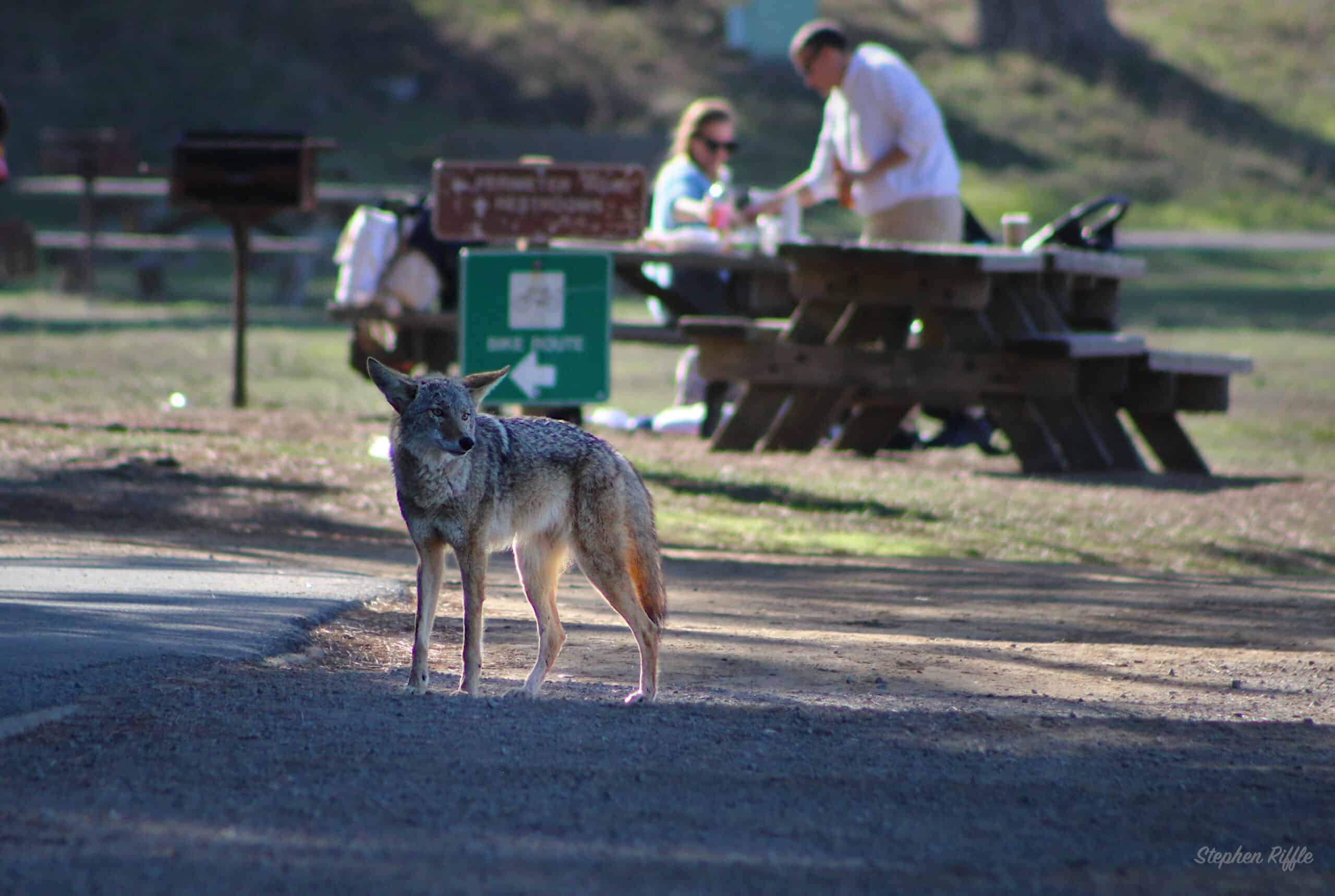Share this article
Wildlife Featured in this article
- Coyote
Uncovering trends in coyote-human conflict can aid in coexistence
Researchers examine records to find coyote conflict trends in San Francisco
The coyote story in San Francisco is a microcosm of what’s been happening with the species in many parts of North America over the past century.
Coyotes had been largely eradicated from the area by the 1950s at the latest, but they moved back into the city in the early 2000s. Some scientists estimate around 100 coyotes now live in the 49 square miles of the larger San Francisco Bay area. But their elusive nature makes these numbers hard to confirm.
“The city is saturated with coyotes—the packs that are there are largely the packs that will remain there,” said TWS member Christine Wilkinson, a postdoctoral researcher at the University of California, Berkeley and a research associate with the California Academy of Sciences, a research institute and museum.
Wilkinson and her colleagues were interested in the effect coyote (Canis latrans) recolonization was having on humans. For a study published recently in People and Nature, the team examined a database of community reports, which including conflicts or sightings, gathered by the San Francisco Animal Care and Control, a taxpayer-funded animal shelter, since 2006 to tackle this question. They hoped the findings would help them plan for a future where coyote encounters are increasingly common.
“It’s something that we need to better plan for in the Bay area and also in California as a whole,” Wilkinson said of these encounters.
Increase in conflict reports
The database revealed an increase in the proportion of reports constituting coyote conflicts over the past five years. The team noted an uptick in these types of reports, particularly during the coronavirus pandemic. The team suggested that’s because as more people began working from home, they were also going to parks more, where they were coming into more frequent contact with the animals. However, the number of coyote sightings during this period dropped—Wilkinson said that people may have been actually seeing them more, but reporting less during this period as sightings became more common.
The researchers also saw an increase in coyote conflicts during the dry season from June to September. During this time, coyotes may have been coming closer to homes in search of rodents attracted to trash cans or human water sources.
There was also an uptick in reports from April to June, during prime pup-rearing season. Some of these conflicts may have been perceived, rather than realized. Many people don’t always understand coyote behavior well enough to understand signs of aggression, Wilkinson said.
When people approach active dens, for example, it’s not uncommon for a coyote to follow them for a period. Wilkinson said the animals usually do this to escort people away from their dens, but won’t necessarily do anything aggressive. “Yet, being escorted by a coyote can still be unnerving to people,” she said.
But it’s not always easy to tell from the reports whether the conflict was realized or perceived, unless a pet was taken by a coyote, for example.
The researchers found that many of the conflicts reported involved dogs—especially those off-leash. This partly reflects the fact that many dog owners shirk the rules. “People love dogs and also don’t really listen to the leash laws,” she said.

Who make coyote reports?
The team also compared the report locations to societal factors to learn more about the ways that economics, pollution level and the amount of urbanization might affect conflict.
“These coyote sighting reports tell you just as much about the reporter as about the coyote,” Wilkinson said.
They found that reports, in general, were less common in areas where pollution burden was higher. This may reflect coyote behavior, as the animals in these areas, according to reports, were more skittish, Wilkinson said.
Reports weren’t as numerous in areas with lower average income, they also discovered. This is possibly because many people in these areas don’t work from home or go to parks in the middle of the day as much as those in higher income brackets, Wilkinson said.
Public education
The content of the reports indicated many people had some knowledge about dealing with coyotes, but there is still some room for improvement. Aside from a lack of understanding about the way coyotes normally behave around active dens, it is likely that people also didn’t always haze them properly, Wilkinson said. Some respondents used common hazing techniques during encounters, such as waving their arms or yelling at the coyotes. For hazing to be effective in a particular situation, people are supposed to do so until coyotes leave the area. But people often indicated that they stopped too soon in the reports.
There have been reports of some people hand-feeding coyotes, and other reports indicate a need for people to better secure their trash cans and keep their cats inside. Also, “dog owners need to take leash laws more seriously,” she said.
These findings reveal opportunities for improving public education about the ways that coyotes behave, Wilkinson said.
But, overall, the reports weren’t all bad.
“Many of the people who experienced conflict with coyotes also expressed positive feelings about coyotes,” Wilkinson said.
Header Image: Coyotes moved back into San Francisco in the early 2000s. Credit: Stephen Riffle








